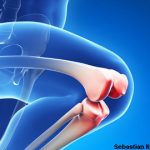Want to learn more about total hip arthroplasty? Register for the January 17 ARHP Rheumatology Audioconference, Minimally Invasive and Percutaneous Total Hip Arthroplasties, where Alberto Bolanos, MD, will describe the latest advances in these procedures.
Dr. Bolanos has worked with surgical treatments of arthritic conditions since his fellowship at the Hospital for Special Surgery in New York City. Currently serving as chair of the department of orthopedic surgery at Mills-Peninsula Medical Center and president of the Orthopedic Institute of the Bay Area in San Mateo, Calif., Dr. Bolanos has a practice predominantly focused on surgical treatments for arthritis, including complex joint reconstructions using a minimally invasive technique.
The surgical solution for patients with arthritis can include a total joint replacement, an osteotomy, or an arthroscopy. While most surgeons use a posterior approach, minimally invasive surgery requires a different incision and a percutanous approach. The muscles and tendons are left in place, though the components are ultimately placed in the same location.
Dr. Bolanos’ presentation will include images that allow participants to understand the differences between traditional replacement and minimally invasive methods.
“There are about a dozen ways to do it,” says Dr. Bolanos. “My goal is to help people understand exactly what those differences are. We’ll discuss minimal incision versus minimally invasive versus traditional procedures.”
There is good reason to learn about the less-invasive options, he continues, because “patients who undergo minimally invasive procedures tend to rehabilitate much faster with less pain and resume regular activities much sooner.”
We may soon see more outpatient replacements, which will have implications for those who provide care for patients in recovery.
—Alberto Bolanos, MD
In addition to a different surgical approach, Dr. Bolanos has also changed anesthesia and physical therapy techniques. Hip precautions, such as not allowing post-operative patients to flex their hips more than 90 degrees or cross or rotate their legs, are no longer needed for most patients. These prohibitions are uncomfortable for patients and difficult for therapists trying to teach patients to move again.
At the end of the talk, participants will have a thorough understanding of the various total hip replacement techniques, the advantages and disadvantages of each, and an understanding of why minimally invasive procedures are preferred.
“We may soon see more outpatient replacements, which will have implications for those who provide care for these patients in recovery,” says Dr. Bolanos. “Occupational therapists and physical therapists will do some pre-op work to help speed up recovery, but otherwise little will change before the operation.”
